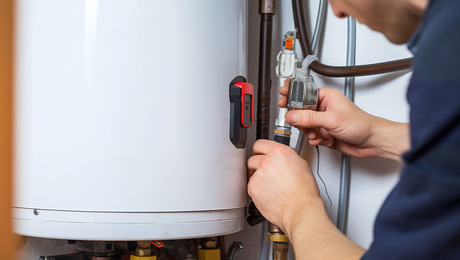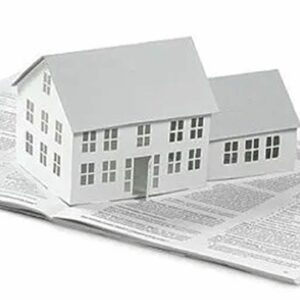I need to insulate my summer cabin in northern WI. The place is stick framed with 2×4 walls sheathed in T-111. My intention is to cover the inside walls with t-111 also.
I had planned on ripping 2″and 1.5″ pink foam and filling the bays and using great stuff pro around the foam to seal it up. My neighbor said it’s a good way to start an ant farm, he had a ton of carpenter ants behind a t-111 wall at his place.
The other thing I’m considering is Tiger foam. It seems pretty messy and expensive but it might be worth it.
The roof is currently on 2×4 rafters (open) with a 2″ foam plywood sandwich. I should maximize the insulation there, too.
Fiberglass doesn’t do much for air infiltration and the construction isn’t very ‘tight”
I realize that this is not enough insulation for a full time place but we want to extend the season in the fall and the early spring. Any ideas, comments or anything else are welcome.
Edited 4/1/2007 6:48 pm by sweetlake




















Replies
here's a picture of the outside. I may wrap the place and side it some day. Heat is small wood stove. I can heat it to 68 when the outside is about 30 now.
I think your neighbor is wrong. Wet wood attracts carpenter ants not foam. If you have a properly sealed structure you should be okay. Actually the rigid would be much better that fiberglas batts if they got wet.
The foam would shed the water much better than the batts (which would hold the water bringing mold & ants).
If you do as you plan with the foam, then add another layer on the inside with some 2x stringers running across the wall you can really get some R in there.
Seaerch for Mooney Wall for the how to of the method, but foam instead of cells.
Unless there is a cell source & blower nearby, then do it with cells. Lot cheaper and a tighter product when you're done. I see a TV in one pic so assume you have electricicity available to run a blower?
Are the windows decent, or single pane?
Joe H
Read the 200 posts on the mooney wall, I'm sold on the idea but am concerned about the headers. The cabin has a ton of glass (insulated vinyl windows) with big headers. Would pink foam over the headers (1.5") be better than 1.5 inches of cells? Thanks for the direction!
The foam is definitely better for the header area, that much cells would be hard to keep flat and not do much for you.
If you can do the cells, you will have a better final result than trying to fit foam sheets. Spray foam would be another story, but another price too compared to cells.
Joe H
I'd like to suggest using the foil-faced foam in the cabin. It's simply amazing just how effective an inch of that stuff is. Another "plus" is that. when left exposed, the foil reflects enough light to really brighten up the room.
The foil-faced stuff also cuts and handles much better than ordinary styrofoam.
I have a similar concern using fiberglass. Ants nest in it, mice simply love to nest in it, etc. I'd reserve the fiberglass for the area immediately near the woodstove; I'd also face that area with drywall= and a metal facing wouldn't hurt, either!
He can't leave the foil faced foam uncovered though; 1/2" minimum drywall cover according to the directions.
My wife wouldn't appreciate the qualities of reflective foam walls. I plan on covering the walls with t-111 on the inside, too. makes for some nice rough sawn walls. I'll attach another photo. What's the differnce in the foam boards besides the foil? More R per inch? The ceiling is another story. Is that a good candidate for dense pack, or mooney style wall? FG batts?
Parolee # 53804
I notice you're out of beer, best stock up before they stop making it.
Mooney the ceiling too,
FG batts, you'd be ahead to spend the $ on beer as waste it on FG.
Joe H
A good point about covering foam with drywall for fire protection. Yet, this is a cabin, and not a home. I did stress keeping the stuff away from the heater. As a cabin, I think we can assume that many other construction details are also being overlooked. Something to consider when buying a used cabin! As for the differences between the foil-faced foams and styrofoam...
Apart from the foil, they are very different materials. While most of the difference is of interest only to a chemist, for our purposes the difference is that the foil-faced stuff has a much finer texture, and can be cut much better. This makes it a lot easier to work with. The foil also makes a better surface for marking your cuts.
This wasn't a used purchase, I built it 7 years ago as a strictly summer place. It has done a fine job as a 'play house' as my beloved calls it. It was based on a design in FHB, I bought drawings from the architect and shrank it a bit to meet the budget. It's definitely built like a large tree house rather than a year round home. Code was consulted for safety issues,not energy savings. Fantastic views, affordable and paid for. We want to extend the short summer we have by insulating. The little wood stove keeps the place 30-40 degrees warmer than outside but northern WI can still be cool at night in the spring and fall (18 last night).The pictures I posted show a rather cluttered place because the deck furniture and the like are crammed inside. Same for the lack of beer in the fridge, it's still winter.Thanks to all for the idea with the cells and the mooney wall, i like it better than fitting all that pink in the bays. I still welcome any other ideas.
sweetlake,
For the time and money much as I hate to say it, the fiberglass batts are the easy street seeing you say you are only interested in extending the short summer season.
That is if that means not expecting to keep the place heated which means draining the water lines for winter and such.
Fiberglass batts, especially if you add 1/2 foamboard over it, will do all for a fall season and is really quick. That's about the only positive benny with fiberglass insulation.
Now if you are thinking perhaps making it a four season in the future then well, that's a whole 'nother game.
Parolee # 53804
Of course I didn't expect to want to use the place in the late fall and early spring when I built it. I think I'll use cells, just to try it out. And of course it'd be nice to have it well insulated if we started using it in the winter.
It is my understanding that foil faced is polyisocyanurate. Polyiso has slightly higher R-value than extruded polystyrene (blue or pink board) or expanded polystyrene(white beads like a cheap coffee cup). Polyiso is an open celled foam and will retain moisture if wetted. If wetted, the R-value is greatly diminished. Blue or pink board is closed celled and will not retain moisture, hence is a suitable vapor barrier as well. If the foil gets nicked or cut, vapor can migrate into the polyiso.
For the camp, I'd load up the existing bays with FG batts (unfaced), then add a layer of 1" extruded to the inside, then strap and drywall, or T-111 over that.
The mice will love their new fiberglass nests.